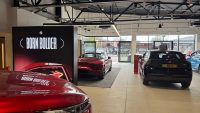You don’t need to travel too far from home to find a village or small town with what used to be, or still is, a traditional garage.
My dad would often point out sites that used to be occupied by small-scale franchised dealers. ‘This farm shop used to be an Austin dealer’. ‘This hand car wash used to be a Vauxhall dealer’, etc.
The corner shop nature of how OEMs distributed their cars is hard to imagine today when compared with many of the polished retail facilities.
In most cases, there was only a one- or two-car showroom, a handful of used cars and a petrol pump or two.
Over time, most of the familiar automotive faces from the 1950s and 1960s have been and gone and those that exist today are large global conglomerates that expect a different scale and standard from retail sites.
However, as with any business cycle, I wonder if things are about to change.
The biggest factor affecting new car distribution is the (gradual) move to agency sales. As an advocate of agency retailing, I feel it has been a long time coming.
While I understand that wholesale distribution has been a successful driver of volume over the past three decades, it isn’t a profitable model for OEMs or – especially – retailers once all costs are accounted for.
This means that (in theory at least), with all prices being set by the manufacturer, anyone is free to sell a new car for the same profit margin regardless of scale or capital base.
Agency sales complement online sales distribution. I am not someone who forecasts the end of traditional bricks-and-mortar retailing in the motor industry.
I believe an emotional product needs some physical retailing to win new customers or overcome generational retail trends (my parents would never order a car online, for example), but I do accept that as each decade passes, consumers become more comfortable with online purchases.
This is not to mention new entrants to the new car market such as Tesla that retail almost exclusively online.
The other impact is the nature of new car technology.
With fewer consumables and more interactive sales tools, traditional retail spaces will not need to be so large.
We are starting to see many OEMs beginning to cull less profitable model lines from their inventories, which results in less need for display areas and demonstrators.
Workshop facilities will inevitably shrink, as will the need for large parts storage or distribution facilities.
It is easy to draw the conclusion that new car retailers will become large used car sales spaces with a section assigned on the site for new car showrooms or display, but I believe there is an opportunity that may be missed.
A manufacturer that is prepared to be flexible about retail spaces and retail partners could give those less flexible a black eye.
A high street shop or small industrial unit could become a corner shop retailer in those small towns and villages without any franchised representation, and with fixed-profit models proving to be attractive, territorial penetration could be achieved in the same way that it was decades ago.
This column appears in issue 173 of Car Dealer magazine, along with news, views, reviews, interviews and much more. Click here to download and read it for FREE!

































